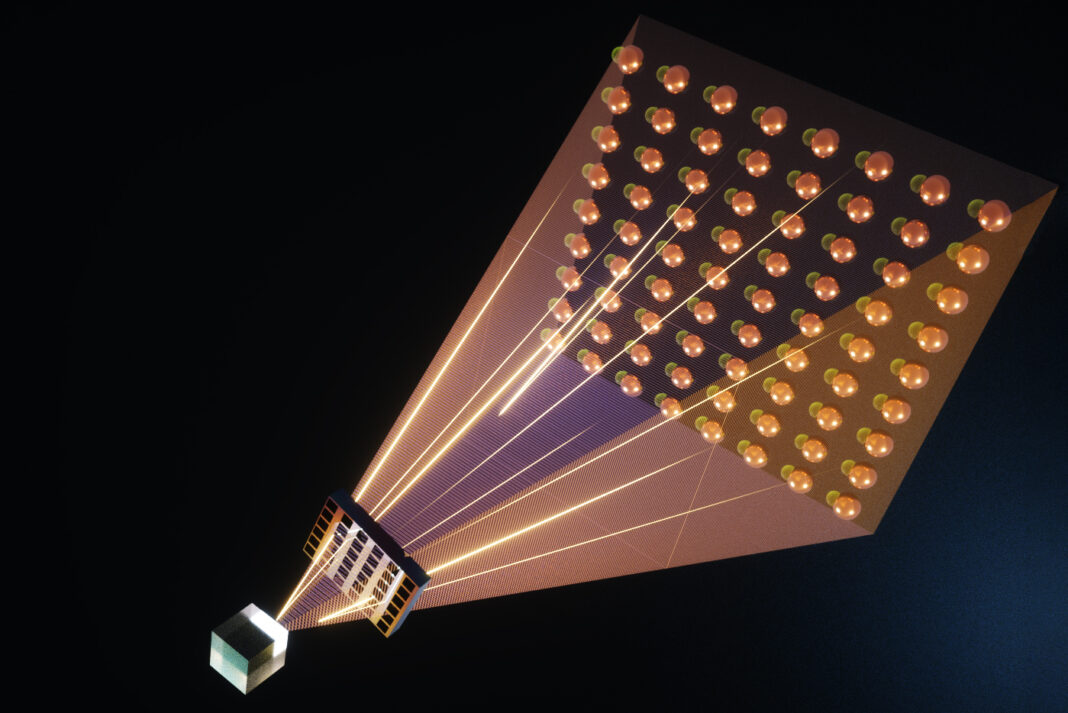In Short:
About 70% of energy globally becomes waste heat. Scientists may design more efficient energy generation systems if they understand how heat moves through materials. Researchers from MIT and others created a new machine-learning framework to predict heat-carrying particles called phonons much faster and accurately than current methods. This could be a game-changer for creating energy systems and improving microelectronics. The method was published in Nature Computational Science and has potential for future applications like predicting other material properties.
It is estimated that about 70 percent of the energy generated worldwide ends up as waste heat.
If scientists could better predict how heat moves through semiconductors and insulators, they could design more efficient power generation systems. However, the thermal properties of materials can be exceedingly difficult to model.
The trouble comes from phonons, which are subatomic particles that carry heat. Some of a material’s thermal properties depend on a measurement called the phonon dispersion relation, which can be incredibly hard to obtain, let alone utilize in the design of a system.
Research Breakthrough
A team of researchers from MIT and elsewhere tackled this challenge by rethinking the problem from the ground up. The result of their work is a new machine-learning framework that can predict phonon dispersion relations up to 1,000 times faster than other AI-based techniques, with comparable or even better accuracy. Compared to more traditional, non-AI-based approaches, it could be 1 million times faster.
This method could help engineers design energy generation systems that produce more power, more efficiently. It could also be used to develop more efficient microelectronics, since managing heat remains a major bottleneck to speeding up electronics.
“Phonons are the culprit for the thermal loss, yet obtaining their properties is notoriously challenging, either computationally or experimentally,” says Mingda Li, associate professor of nuclear science and engineering and senior author of a paper on this technique.
Predicting phonons
Heat-carrying phonons are tricky to predict because they have an extremely wide frequency range, and the particles interact and travel at different speeds.
A material’s phonon dispersion relation is the relationship between energy and momentum of phonons in its crystal structure. For years, researchers have tried to predict phonon dispersion relations using machine learning, but there are so many high-precision calculations involved that models get bogged down.
The machine-learning models scientists often use for these calculations are known as graph neural networks (GNN). A GNN converts a material’s atomic structure into a crystal graph comprising multiple nodes, which represent atoms, connected by edges, which represent the interatomic bonding between atoms.
Virtual Nodes Approach
To gain the flexibility they needed, Li and his collaborators devised virtual nodes.
They create a virtual node graph neural network (VGNN) by adding a series of flexible virtual nodes to the fixed crystal structure to represent phonons. The virtual nodes enable the output of the neural network to vary in size, so it is not restricted by the fixed crystal structure.
Virtual nodes are connected to the graph in such a way that they can only receive messages from real nodes. While virtual nodes will be updated as the model updates real nodes during computation, they do not affect the accuracy of the model.
Cutting out complexity
Since it has virtual nodes to represent phonons, the VGNN can skip many complex calculations when estimating phonon dispersion relations, which makes the method more efficient than a standard GNN.
The researchers proposed three different versions of VGNNs with increasing complexity. Each can be used to predict phonons directly from a material’s atomic coordinates.
Because their approach has the flexibility to rapidly model high-dimensional properties, they can use it to estimate phonon dispersion relations in alloy systems. These complex combinations of metals and nonmetals are especially challenging for traditional approaches to model.
Key entities in this research: Mingda Li, Ryotaro Okabe, Abhijatmedhi Chotrattanapituk, Tommi Jaakkola, MIT, Argonne National Laboratory, Harvard University, University of South Carolina, Emory University, University of California at Santa Barbara, and Oak Ridge National Laboratory.
The research appears in Nature Computational Science.
This work is supported by the U.S. Department of Energy, National Science Foundation, a Mathworks Fellowship, a Sow-Hsin Chen Fellowship, the Harvard Quantum Initiative, and the Oak Ridge National Laboratory.





